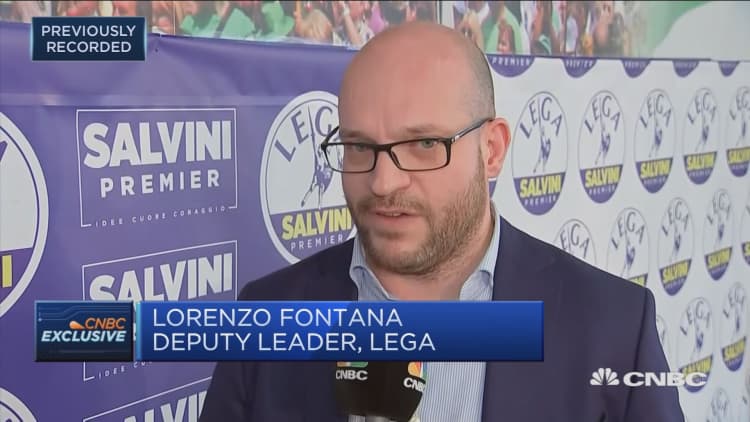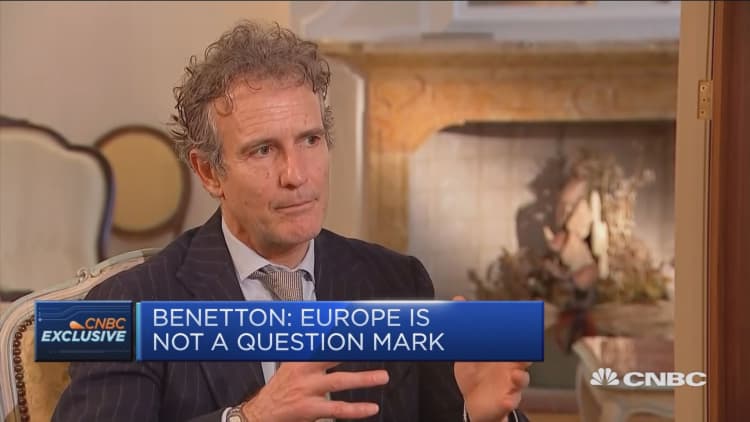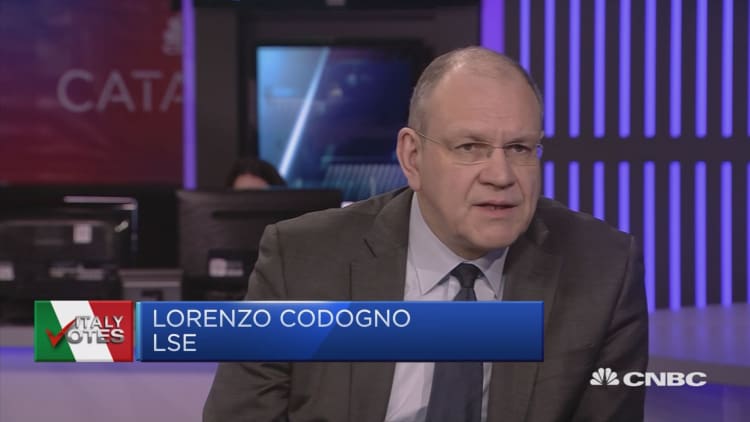Investors will soon find out more details on what the next Italian government will look like, with lawmakers still trudging through the arduous task of forming a coalition after inconclusive elections.
The big surprise of the March 4 vote was that Five Star Movement (M5S) and Lega, both parties known for anti-establishment and euroskeptic stances, managed to obtain around 50 percent of the popular vote. But crucially, neither one of those parties obtained a ruling majority.
The government formation process from here will therefore be marked by horse-trading and backdoor discussions. Somewhat ironically, the incumbent Democratic Party (PD) led by (the now outgoing leader) Matteo Renzi, has become the kingmaker to the formation of the next government.
What are the permutations?
The center-right bloc formed of former Prime Minister Silvio Berlusconi's Forza Italia, Matteo Salvini's Lega Nord and Brothers of Italy (Fratelli d'Italia) achieved 37 percent of the vote. Contrary to expectations, the right-wing Lega garnered 17.7 percent of the total vote, surpassing Forza Italia's 14 percent and making the outspoken Salvini the leader of the center-right alliance. However, the bloc is still 50 seats short of the majority it would need in the parliament's Lower House. This makes a center-right government led by Salvini mathematically impossible.

The alliance could therefore try to find the 50 lawmakers it needs for a majority from the PD party or M5S. Teneo Intelligence's Wolfango Piccoli sees the likelihood of pairing up with PD as low "given Salvini's hostility towards the PD and deep policy divisions between the two sides." In a speech delivered Wednesday, Salvini went as far as ruling out any possible government with the PD, but significantly, kept the door open to discussions with M5S.
Alternatively, M5S, led by Luigi di Maio, which won the most seats on a single-party basis, but again short of outright majority, could also reach out to the PD and other left-of-center parties. According to Giada Giani, an economist at Citi, the left-wing Free and Equal Party (known as LeU who got 3.4 percent of the vote) would be more likely to accept entering into an M5S-led government. While for PD (whose outgoing leader Renzi was fiercely critical of M5S) the decision is more fine-tuned: either join the government with M5S and risk getting "absorbed" by a party that will benefit from Italy's economic recovery or refuse to partner up with them and risk being blamed for pushing Italy into an extreme outcome of a Lega-M5S partnership.
Around two-thirds of PD lawmakers are needed to reach a M5S and center-left majority assuming LeU joins in. For that reason, analysis firm Teneo Intelligence sees this outcome as another low-chance arrangement given how much active support it would need from the PD.

Furthermore, the PD party has ruled out any alliances either with M5S or with the center-right led by Lega. PD Deputy Secretary Maurizio Martina this week said that the party intended to "respect the decision of the people" and would continue to serve from opposition. This, however, does not preclude the possibility of members from within PD splintering.
The final scenario — which would be the riskiest as far as markets are concerned — is one that sees Lega and M5S go into government together. So far, Lega has signaled it would be open to talking to discussions. At a speech given in Rome Tuesday, Di Maio rejected the idea of forming a government different from the one that was presented prior to the elections, adding that M5S was not "scared" at the prospect of another election.
Another potential outcome is one where President Sergio Mattarella calls for the formation of a national unity government — this would entail participation from the bigger parties and would likely be the most fragile option politically.
Repeat elections can also not be ruled out, though this is unlikely to happen before several attempts of government formation have been made.
What happens on March 23?
On March 23, the Italian parliament will reconvene and house speakers are announced. This will give the first clues on any possible coalition outcomes.
Speakers will need to be elected for both the Senate and the Lower House. Any agreement between parties would be based on selection for both houses. Mathematically, the center-right has enough votes to win the Senate in a ballot run-off, but in the Lower House, it could be stopped by a PD-M5S partnership.

The speaker selection for both houses will therefore give an idea of what discussions have been going on in the background.
Towards the end of March, Mattarella will then start consultations with various parties on appointing a new prime minister.
According to analysts at Citi, "the only constitutional principle to guide Mattarela is that the PM mandate should go to the candidate who has the best chance to win and absolute majority (in both houses of parliament) to be sworn in. In all the 17 national ballots since 1948, the party that came in first in the election has always been part of the first government to be appointed." Di Maio, therefore, is more likely in their view to obtain the government mandate.
The soonest a new government could be sworn in would be early April. Historically, it has taken around 40 to 50 days post-election for the government to be sworn in. In 2013, it took more than 60 days and the government only lasted 10 months before being re-shuffled.





